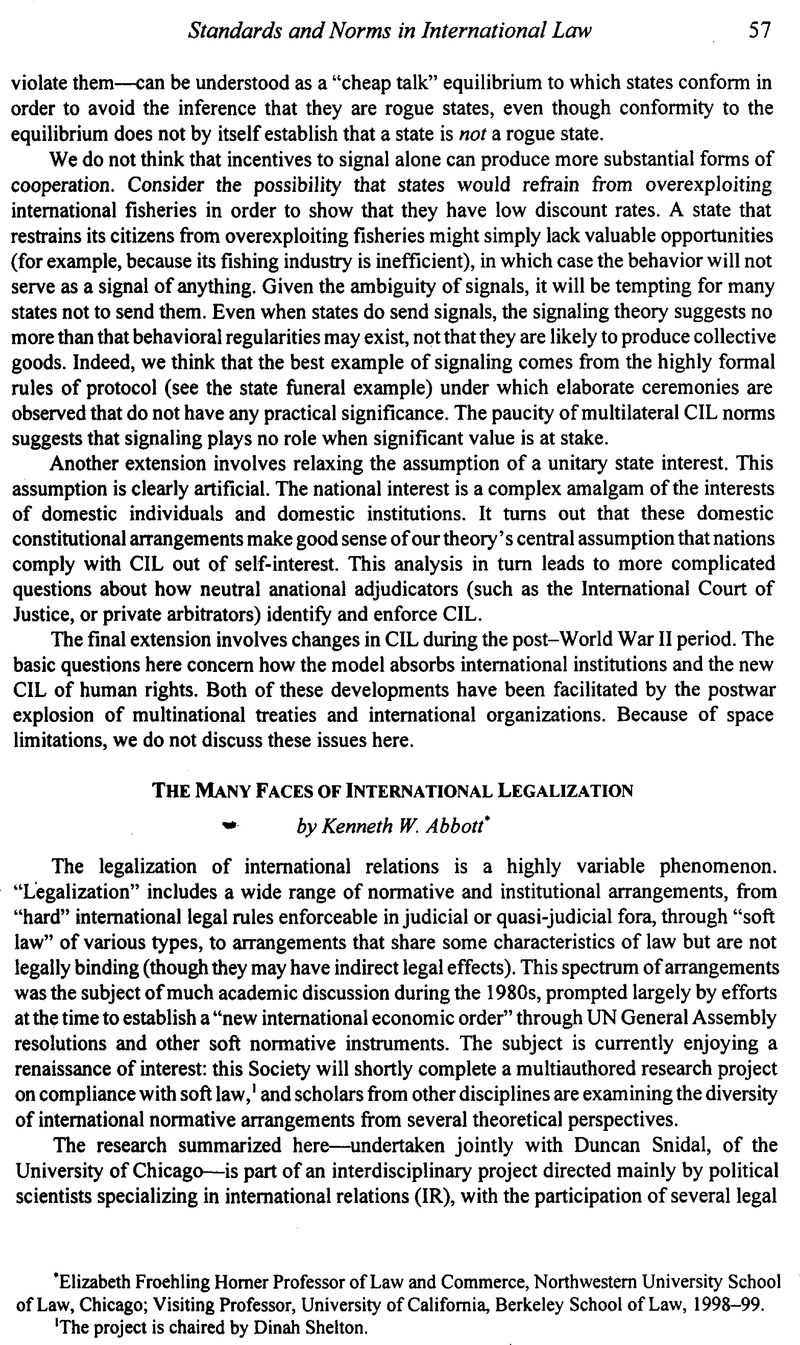Article contents
The Many Faces of International Legalization
Published online by Cambridge University Press: 28 February 2017
Abstract

- Type
- Standards and Norms in International Law
- Information
- Copyright
- Copyright © American Society of International Law 1998
References
1 The project is chaired by Dinah Shelton.
2 The Organizers of the project are Judith Goldstein, Miles Kahler, Robert Keohane and Anne-Marie Slaughter.
3 Abbott, Kenneth W., Elements of a Joint Discipline, 86 ASIL PROC. 167 (1992)Google Scholar; Modern International Relations Theory: A Prospectus for International Lawyers, 14 Yale J. Int’l L. 335 (1989)Google Scholar; Slaughter, Anne-Marie, International Law and International Relations Theory: A Dual Agenda, 87 AJIL 205 (1993)Google Scholar.
4 See, e.g., Mearshimer, John, The False Promise of International Institutions, 19 Int’l Security 5 (1995)CrossRefGoogle Scholar.
5 Cooperation Under Anarchy (Kenneth A. Oye ed., 1986).
6 International Regimes (Stephen D. Krasner ed., 1983); Robert O. Keohane, After Hegemony (1984).
7 Another interdisciplinary research project, this one organized by Harold Hongju Koh, is reviewing IR perspectives on international law and attempting to identify the unique contributions of legal rules and processes to international governance.
8 Abbott, Kenneth W. & Snidai, Duncan, Why States Act through Formal International Organizations, 42 J. Conflict Resol. 3 (1998)CrossRefGoogle Scholar
9 See, e.g., Martha Finnemore, National Interests in International Society (1996); Ideas and Foreign Policy: Beliefs, Institutions, And Political Change (Goldstein, Judith & Keohane, Robert O. eds., 1993 Google Scholar); Wendt, Alex, Anarchy Is What States Make of It: The Social Construction of Power Politics, 46 Int’l Org. 391 (1992)CrossRefGoogle Scholar.
10 “Contemporary Conceptions of Customary International Law,” Stephen J. Toope, Chair, Thursday April 2, 1998, 11:15 a.m.-12:45 p.m.
11 See, e.g., Sullivan, Kathleen, Foreword: The Justices of Rules and Standards, 106 Harv. L. Rev. 22 (1992)Google Scholar; Kaplow, Louis, Rules versus Standards: An Economic Analysis, 42 Duke L. J. 557 (1992)CrossRefGoogle Scholar; Diver, Colin, The Optimal Precision of Administrative Rules, 93 Yale L. J. 65 (1983)CrossRefGoogle Scholar.
12 See supra note 8.
l3 Anne-Marie Slaughter has used the term infrastate actors to refer to agencies of national governments that enter into international agreements and form transnational networks to exchange information and coordinate regulation.
l4 Zaring, David, International Law by Other Means: The Twilight Existence of International Financial Regulatory Organizations, 33 Tex. Int’l L. J. 281 (1998)Google Scholar.
15 Here, soft law is understood as a way station en route to hard law, but in a strategic sense.
16 See Bringing Transnational Relations Back In: Non-State Actors, Domestic Structures, And International Institutions (Thomas Risse-Kappen ed., 1995).
17 An alternate set of strategies utilizes domestic institutions, including courts. See Koh, Harold, Transnational Legal Process, 75 Neb. L. Rev. (1996)Google Scholar.
- 3
- Cited by




